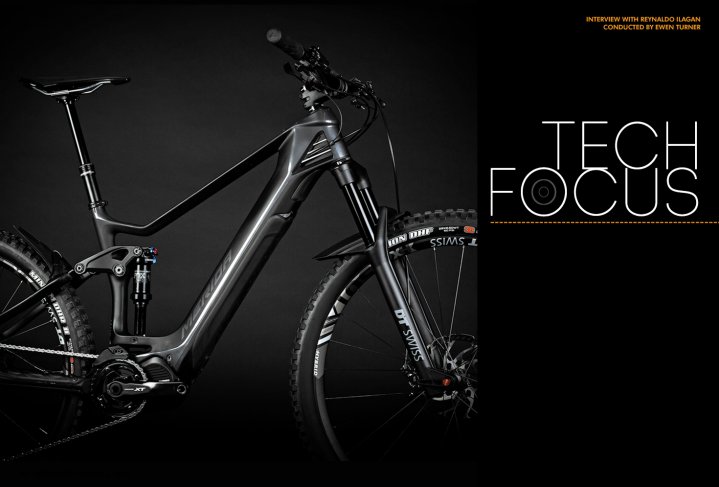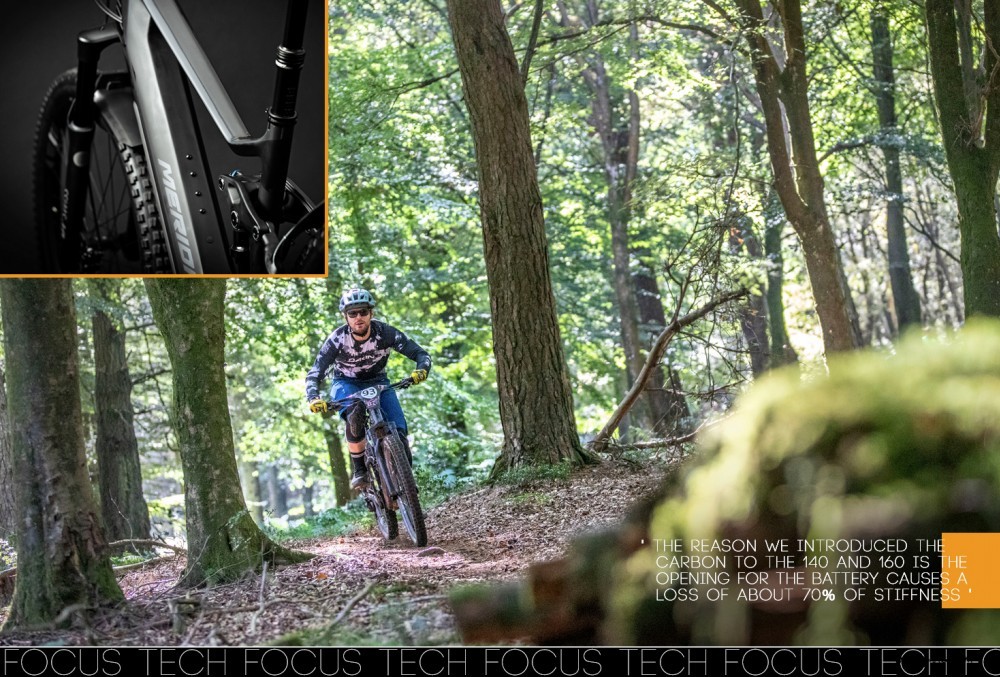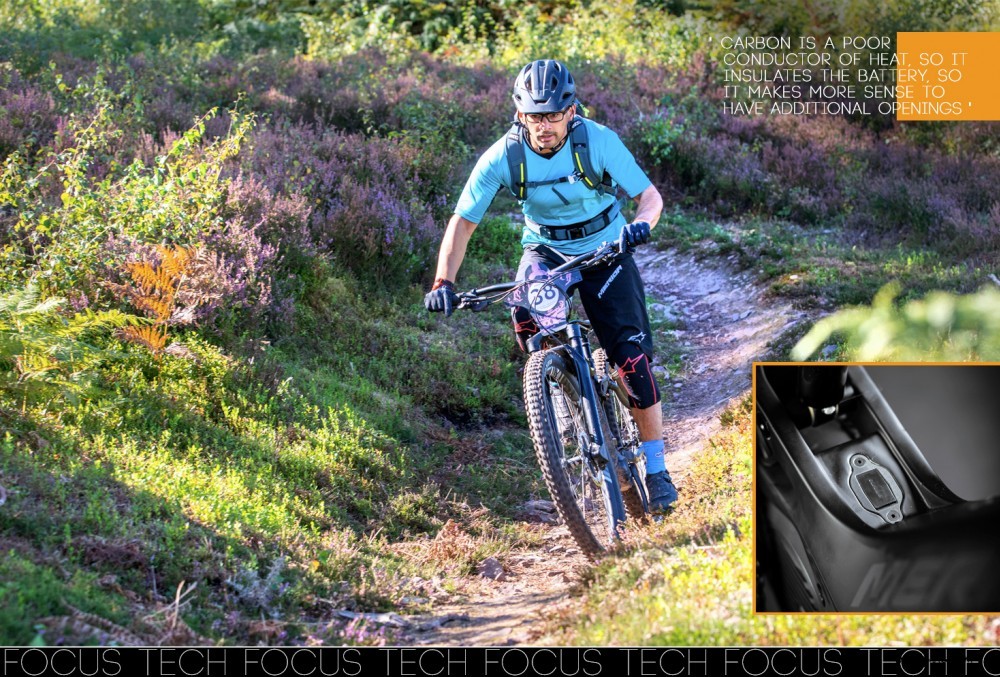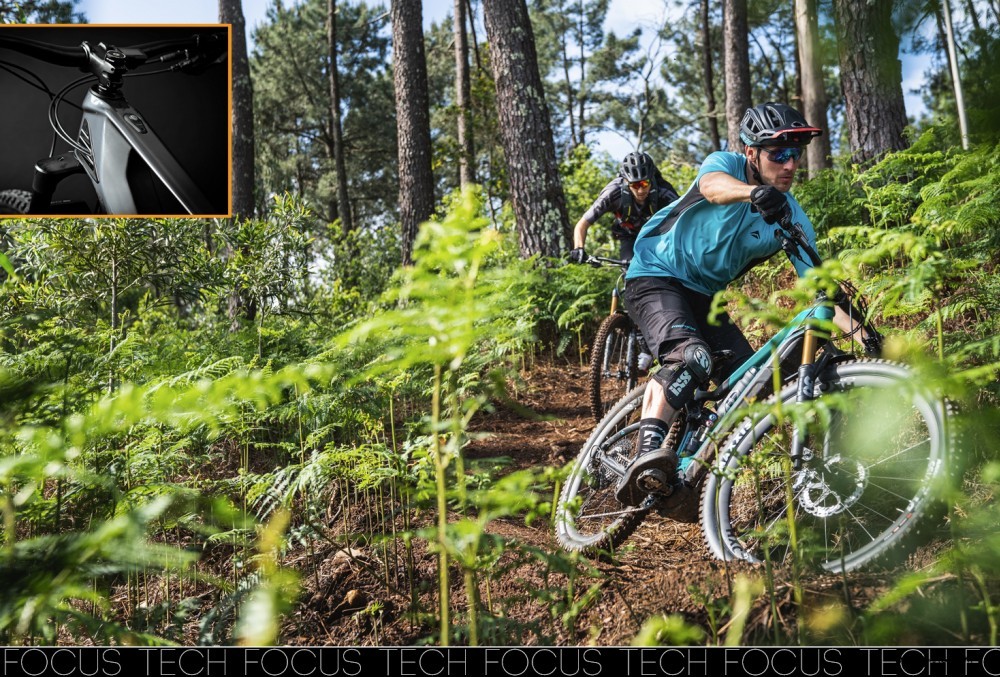
Tech Focus - Merida’s New E-Bike Range
Issue 61 / Thu 24th Oct, 2019
This issue we chat to Reynaldo Ilagan, while racing bikes at the Merida Ex Enduro. The designer behind the new e-MTB range from Merida including the all-new eONE-FORTY, we find out what goes into making a successful e-mtb.
2019 sees the Merida eONE-FORTY and eONE-SIXTY overhauled and relaunched to compete in the ever-growing e-MTB segment. Battery and motor technology is moving on at an ever-increasing pace, and the battle to create the ultimate e-MTB is undoubtedly hotting up.
I was fortunate enough to spend three days racing the new eONE-FORTY at the Merida Ex Enduro in September and spend some time with the man behind the bike Reynaldo Ilagan. A key member of the R&D team at Merida he has overseen the previous eONE-SIXTY and the non-powered ONE-SIXTY. In between racing e-bikes through the forests of Exmoor, we chatted about bringing the new bike to market and the challenges of designing e-bikes.
So the new eONE-SIXTY and eONE-FORTY, it's new but not entirely new yeah?
The rear triangle is from the old eONE-SIXTY, and we had an excellent experience there, our testing in Taiwan is super stringent, and the rear triangle was the best one we have ever tested. The chassis and the feedback from it was great, so why should we make everything completely new?
The bottom bracket is lower, it's slacker, and the seat angle is steeper so typical stuff. On the previous model, we were more conservative with the geometry as back then e-bikes were for more casual riding and not for trails and we were worried if it were too aggressive people would not like it. As it turned out, people wanted the opposite, and the new one has these things.
We use the same rear triangle, but we have added a much better chainstay protector and new fenders. Also, rear triangles are the most critical thing for testing, you can see that when something is breaking its chainstays, so if we had a good product, why change it?
Are there more stresses on the chainstays of an e-bike?
I wouldn't say there is more stress, the difference between an e-bike and a regular bike is not the maximum load, which is probably very similar but it happens much more often than on a regular bike. The system weight is also higher, so there is more load, not like 100% more, just a bit more, so we have to over-engineer a bit for durability. For Merida testing is super important, this is the reason we are not one of the lightest ones, it's more important that the bike is durable.
What are the main challenges when designing an e-bike over a regular bike? Is it fitting in the motors and batteries?
Yeah for sure, clearance is super tight, tyres, battery and motor for examples. Now there is a bigger battery, and they're longer, so making sure you have enough clearance and passing tests is always critical. Our internal tests, even if a few cycles (repeated stress cycles) are missing, we have to increase wall thickness or even reconsider the design. Merida produces over a million bikes so we lots of experience here, with this many bikes if something is not lasting and there are problems well... Merida Taiwan is super strict on this!
Does carbon help with the design and fitting it all in in frame?
Yeah definitely, the reason we introduced the carbon to the 140 and 160 is the opening for the battery causes a loss of about 70% of stiffness. We tested competitors, and some of them were terrible, and when in a right-hand turn, the bike went left as it was so flexy. When you have flex in your rear triangle, it can be useful, but if you have flex in the front triangle, it's not good.
With carbon you don't lose so much stiffness if you have the opening in the frame as it's made in the mould, so carbon is much better. Its also the reason we went for 500Wh, with 630Wh the opening is bigger, and you have to increase the weight of the bike.
The previous bike had the external battery, is there a significant advantage to the new integrated battery other than aesthetics?
Actually not, the disadvantage is the big opening, but part of our concept is to change the battery fast, so the top model, the 10k is delivered with a second backpack and battery because if you want to go really far the extra 20% (in a 600Wh battery) doesn't really help, and if the battery is so big you can't put it in a backpack then that's no good.
What do you like about Shimano as a drive system?
Shimano is famous for making products that are durable after 3, 4, 5 years... After 500 charges the battery still has 80% capacity. This is superior to competitors, and over time it will have more capacity than a 630Wh. 500Wh is the best size as you can just carry another. The motor is also such a compact system, one of the best things is the shifter and the display, it's really MTB dedicated, which is what we really appreciate about it.
The air intake at the front, is temperature a difficult thing to manage?
You don't have to do it, but if you go full gas you will feel the battery is warm, or if you leave the bike in the sun on a hot day can be an issue. Carbon is a poor conductor of heat, so it insulates the battery, so it makes more sense to have additional openings. It would work without, but it definitely helps. They work better if they're cooler.
Did you consider making these e-bikes particularly good at climbing?
For us these bikes are made for having fun on the downhills, I think if you do technical climbs, you have to be a really good rider and its more difficult than the downhills. The eONE-SIXTY is more a bike for which you don't need a shuttle. Uphill riding, of course, you can do it, and a bike with 2cm longer chainstays may climb better, but the concept was not to produce the best hill climbing bike. This is a bike to have super fun on the trails and an agile bike that feels like a regular bike and is super supple.
Are we going to see an eONE-TWENTY?
No, I don't see any reason to use less travel on the e-bike, with the eONE-FORTY and eONE-SIXTY it's the same frame, only different sizing, we're saying the 140 is the more playful and agile bike. The140 small frame is 160 medium frame. With the shorter fork, the reach gets bigger and doesn't make sense, in my opinion, to have a bike with less travel to have a longer reach as it's not that playful anymore. Seat tube length is not relevant anymore because of dropper seat posts it doesn't matter anymore even if you're a tall rider. Our XXL frame back in the day would be considered a medium in terms of the seat tube. What I would love to see in the future all seat tube lengths are the same, it's just a question of how durable and strong the seat posts are.
Do you think the next advance will be battery tech?
Yeah definitely. I want a lighter bike for sure, but I don't want a 12kg bike, I think the perfect weight would be 18kg something like that, maybe 17kg. There will be better cells, of course, I think there must also be in the mind of the customers how heavy they are. Customers may also have to accept in the future if you're tall/heavy you'll need a bigger battery and the bike will be more expensive, more cells just make it more expensive.
Videos
By Ewen Turner
Ewen Turner is a self-confessed bike geek from Kendal in the Lake District of England. He runs a coaching and guiding business up there and has a plethora of knowledge about bikes with an analytical approach to testing. His passion for bicycles is infectious, and he’s a ripper on the trails who prefers to fit his working life around his time on the bike.












